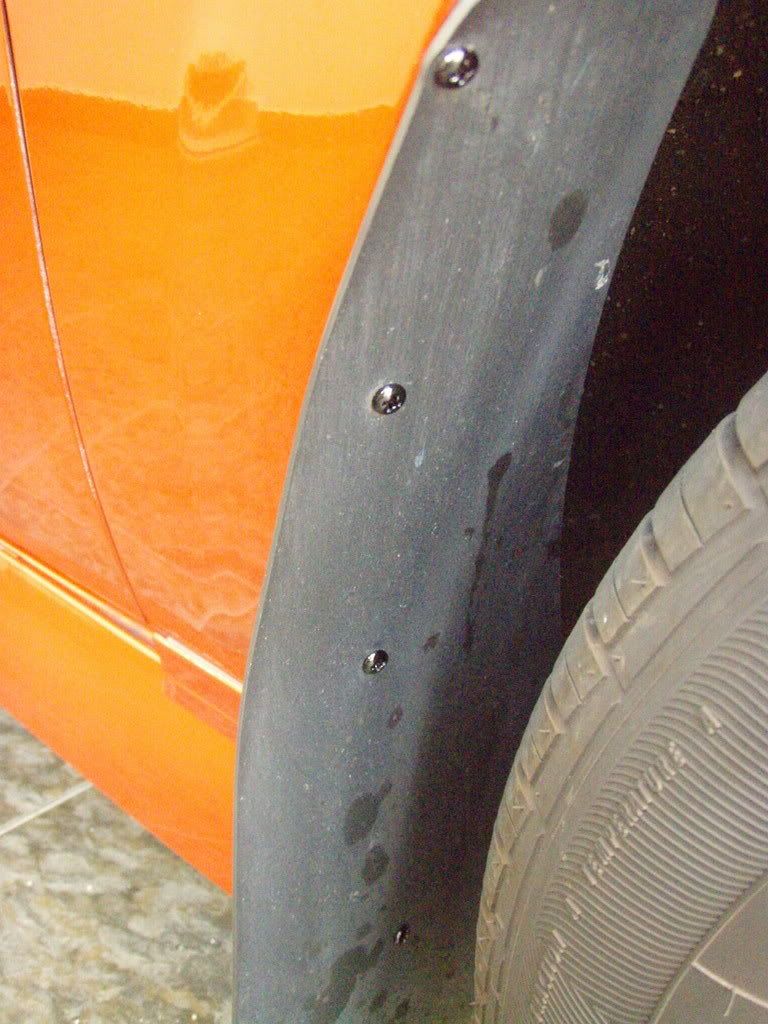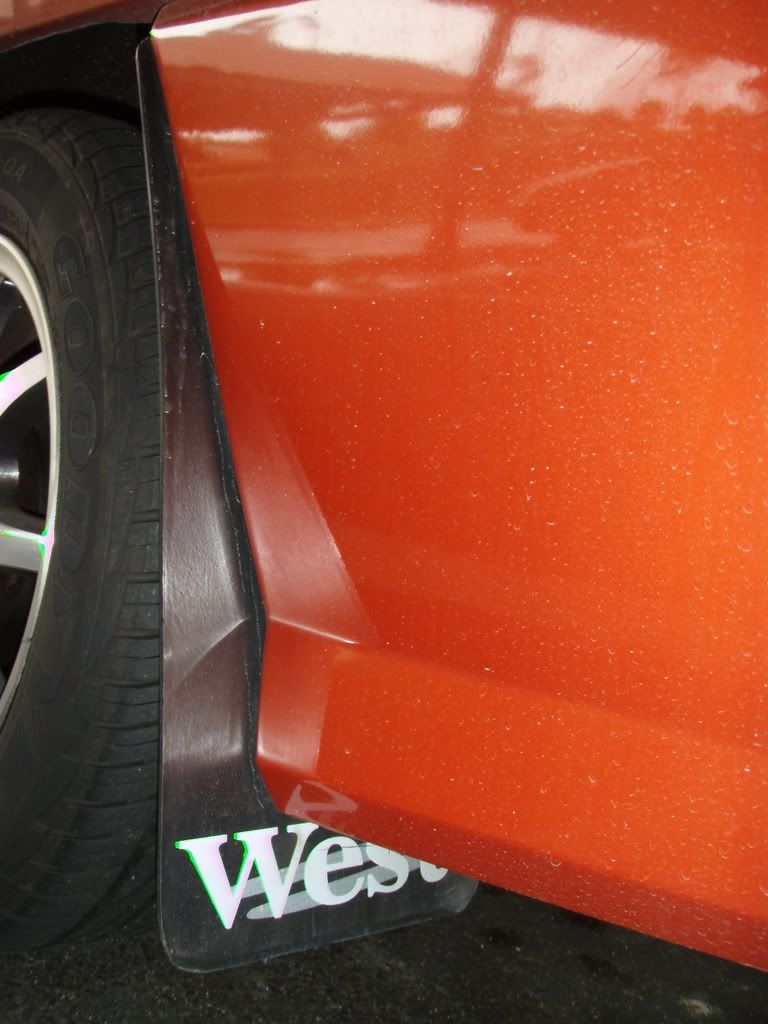Ok, enough of Toto numbers...
As promised, my engine bay mods...
 |
| Before... |
I then bought something called insulfex...
Ok, dun play play, it comes in 4' by 5'... Or you want 30m roll? Lol...
There's a comparison of a normal 15cm ruler with insulflex...
If you don't really know what's that, here's some technical info...
Technical Specifications
|
|
Flexible Eastomeric Foam Insulation
|
|
|
|
AVERAGE PHYSICAL PROPERTIES
|
RATING
|
TEST METHODS
|
Density
|
0.08 - 0.12 gm/cm3
( 5 - 8 lb/cuft )
|
|
| Thermal Conductivity at 20°C | |
| mean temp. |
|
0.0374 W/mK
(0.26BTU.in/hr.ft2. °F)
|
|
Temperature Limits °C
|
-40°C to +105°C
|
|
Water Absorption
|
0.27%(By Volume)
3%(By Weight)
|
|
Water Vapour Diffusion Resistance Factor
|
>5000
|
|
Ozone Resistance
|
Excellent
|
|
| Thermal Stability | 7 days |
| (% shrinkage) | 200°F |
| 7 days |
| 220°F |
|
|
|
| Average time of burning |
| Flexibility |
| Weather and Ultraviolet Rays |
| Resistance |
|
CLASS 0
|
CLASS 1
|
Less than 5 seconds
|
Excellent
|
|
BS 476 PART 6
|
BS 476 PART 7
|
ASTM D 635 - 91
|
|
|
Ozone(UV) Resistance And Weather Resistance
|
Excellent
50pphm/72hrs/40 C
|
|
Vertical Burning Test for Flammability of Materials
|
Within range of UL test requirements
|
UL 94 (V-0)
(Under writers Laboratories Inc.)
|
Smoke Density Rating
|
Within Limits
|
|
Evolved Gas During Burning
|
No Halogen and Nit rosamine Detected
|
|
Noise reduction (Noise Absorption)
|
NRC 0.14
|
|
Oil and Grease Resistance
|
Excellent
| |
Toxicity - Heavy Metals
|
Not Detected
|
|
Elongation, Tensile And Flexibility
|
Excellent
|
|
Chemical Resistance
|
Excellent
|
|
Odour
|
Negligible
|
|
Electricity Conductance
|
No
|
|
Surface and Physical Properties
|
Tuff Skin
Not easy broken/torn
| |
Mildew Resistance
|
Not Fungal Growth
|
|
|
|
So enough of scientific terms? Actually to summarize in 2 paragraphs...
Insulflex is a flexible and light weight elastomeric nitrile rubber material designed for thermal insulation. Insulflex insulation is generally black in colour, other colours are availble upon request. The product comes in tubing, roll and sheet form.The extruded flexible tubings are specially designed to fit the standard diameters of copper, steel and PVC pipings. Sheets are available in standards precut sizes or in rolls.
|
Use in:
|
|
Insulflex insulation is an expanded closed cell structure provides the ideal and most efficient vapour barrier for the prevention of condensation or frost formation on cooling systems, chilled water and refrigerant lines.
Insulflex insulation also prevent retards heat loss for hot water plumbing and heating, dual temperature piping and solar systems. It protects pipes by acting as a vibration damper and giving protection against corrosion by atmospheric and industrail environment.
Insulflex insulation with its inherent flexibility makes it ideally suited for the insulation of large surface area such as tanks, irregular shaped vessels, air-ducts and large diameter pipes.
|
|
Ok la, enough of those... Basically this thing is the black foam that wrap around your air con hose... Go and have a look!
Why insulflex for my ride? Reduce noise la, reduce heat, block UV as stated in the technical specs above? Besides, it's not easily combustible, non toxic, non-odour, water-oil-grease resistant, non-toxic, fungal-free and bla bla bla... I didn't opt for dynamat or whatsoever because it's overly expensive... RM200 per door... (Pocket on fire) Insulflex? RM13.80 enough for my bonnet and one door... Although won't be as effective as Dynamat, it's pretty affordable and effective for its price...
To fix 1/4 inches thick insulflex into my engine hood...
1. I used old newspaper and a pencil to trace the hood linings... Pretty easy job, just mask tape the news paper in place and start tracing along the sides of the bonnet metal...
2. I add 1.5cm to the sides of the traced line, forming a new line with a bigger area...
3. Cut out the shape of the traced paper along the new line...
4. Place it on top of the insulflex. Using a pen-knife, start cutting the insulflex according to the newspaper shape... With a sharp pen-knife, it should be very easy to cut out... Just extend your pen knife blade longer so that the cuttings do reach the bottom of insulflex...
5. Invert the news paper and repeat step 4... 1 newspaper cuttings is for 2... Your hood should be isometrical right? Meaning the left triangle should be same shaped with the right triangle, just that the shape is inverted...
6. The bottom 2 triangle has some metal poking out and the windscreen washer is there... So cut holes for them...
6. Apply Dunlop Contact Adhesive on the smooth sides of insulflex. Reason? Secondary science textbooks thought you so... Smooth surface will ensure good contact with glue and the hood surface... Means can use minimal glue to get a good contact. While the rough surface which is facing towards the engine bay will help absorb the sound even better...
7. Wait for 1 minute for the glue to dry a bit then paste it to the hood...
8. Press, press and press all around the insulflex to get a good contact between the insulflex-glue-hood... You won't want the insulflex to drop on your engine while your engine is operating... The damage will be... Sendiri tau la...
9. Wait for it to dry... I left it for half an hour after all is pasted on...
10. After half an hour I go fetch people so the engine heat assisted in drying the glue as well... After I came back, I opened the hood again and pressed all the insulflex again to ensure all in contact with the hood and *touchwood* nothing happened to the insulflex...
 |
| Cut according to the newspaper shape... |
AFTER :
Nice le...
Since I have some more extra's like bits and pieces of insulflex, I used them to stick around the car...
Why stick on these places?
This places will always kena the rubber part of the door... For long run, the rubber might leave black marks or even scratches the car paint... I used WD-40 to clean the places with the rubber marks. Then I used some insulflex with double sided tape and gao-tim those "rubber-hitting" parts. If you did notice, I also stick some on my hood... The area gets blacken very fast if left unattended...
The leftovers I pasted it on driver's side door panel...
Effects:
1. Engine noise has reduced significantly in passengers cabin. Highly noticeable during hard revving...
2. My door opening and closing sounds more solid now compared to other doors. Slight improvement only... I may need bitumen strips to paste on metal parts of doors to get a better effect...
Overall, the results is significant enough to be noticed.
Next post hints:
Yes, it's something inside engine bay too...


















